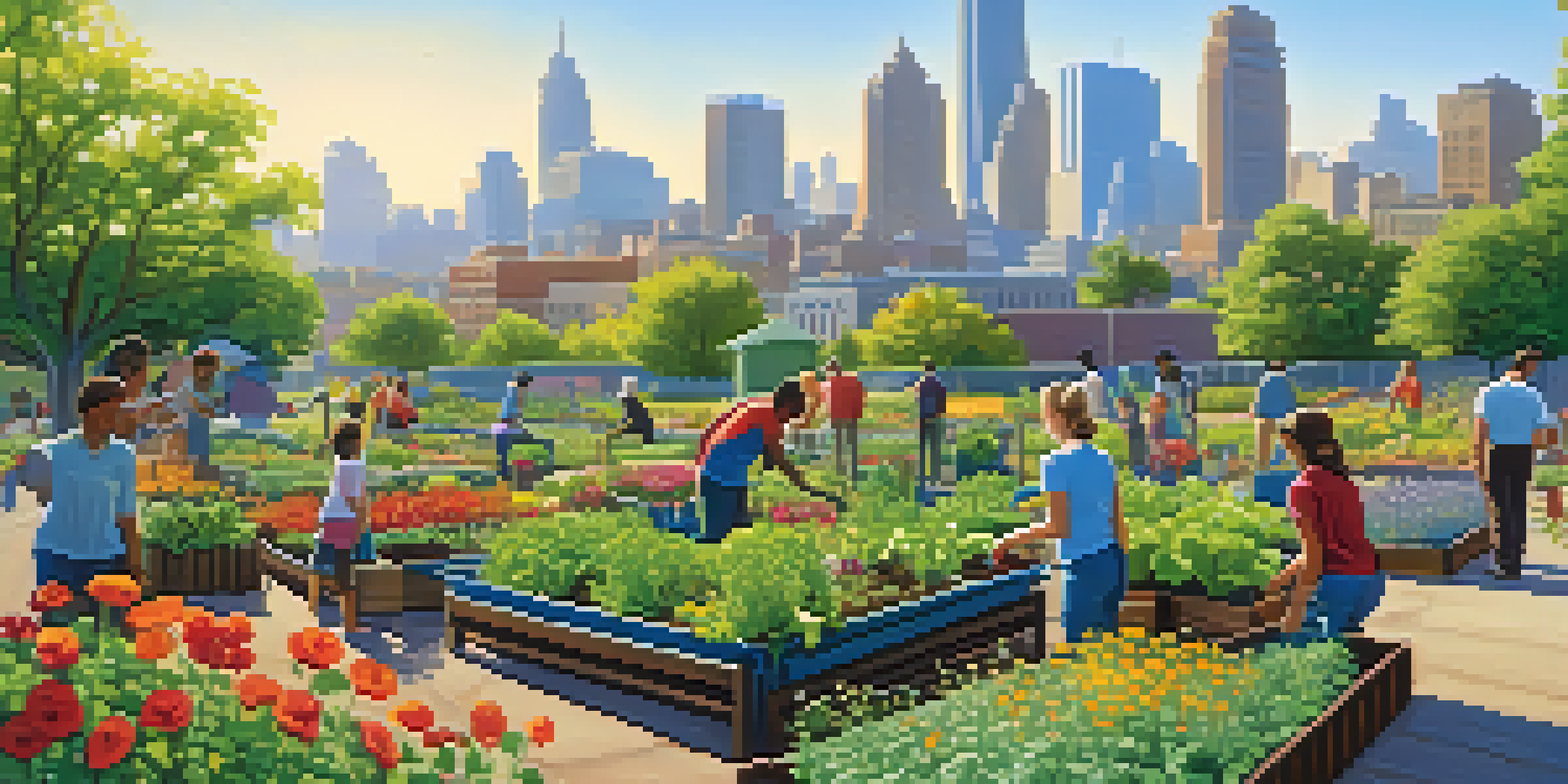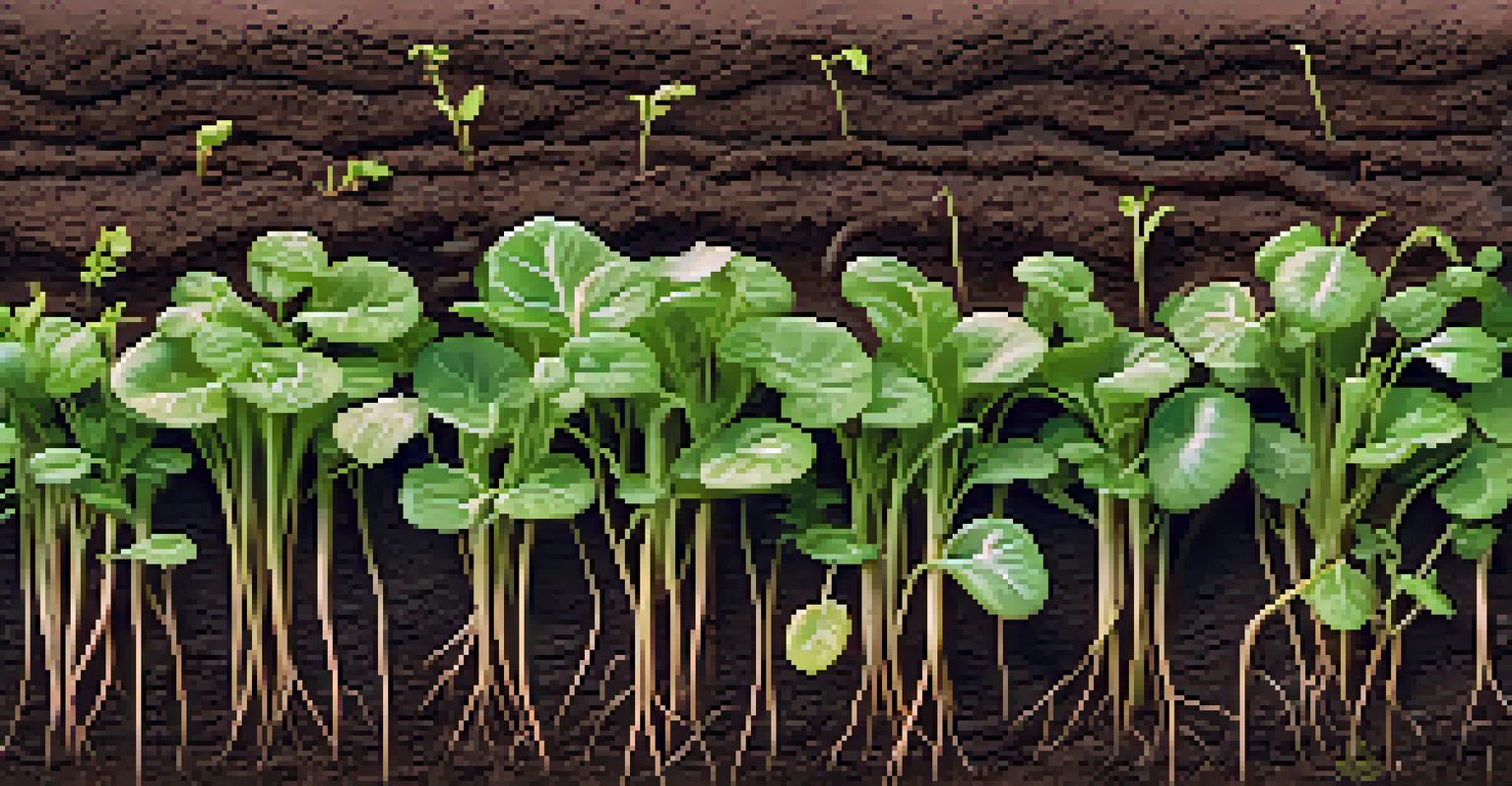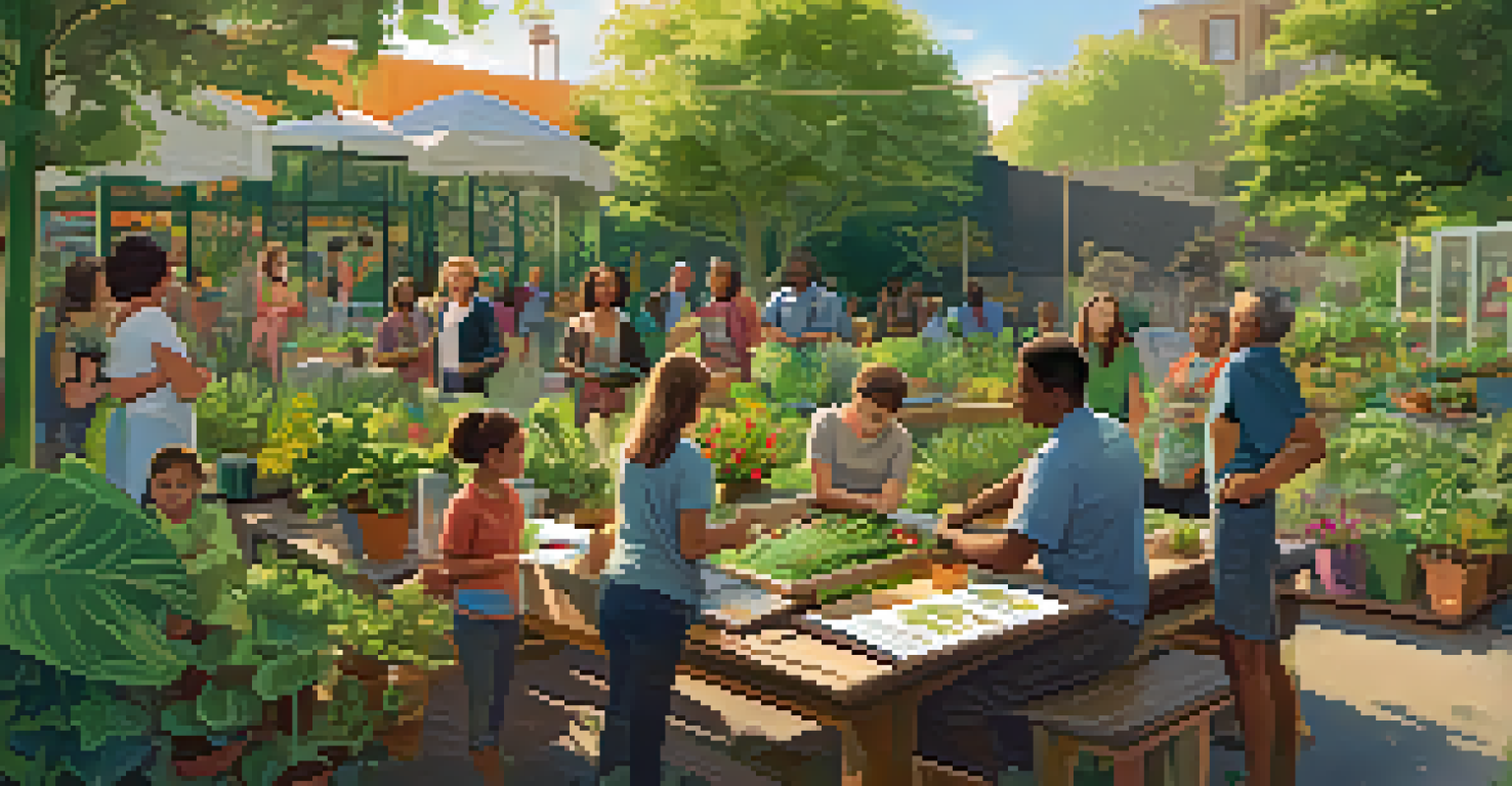Community Gardening as a Means of Promoting Environmental Health

Understanding Community Gardening and Its Benefits
Community gardening is more than just planting flowers and vegetables; it's about cultivating relationships and a sense of belonging. These shared spaces allow neighbors to come together, learn from each other, and work towards common goals. By engaging in gardening, individuals not only grow food but also foster a sense of community that can lead to improved mental health.
To plant a garden is to believe in tomorrow.
Moreover, community gardens promote biodiversity by providing habitats for various species, including pollinators such as bees and butterflies. This biodiversity is essential for a healthy ecosystem, as it helps maintain balance and resilience against pests and diseases. The act of planting diverse species can also enhance soil health, which is crucial for sustainable gardening practices.
In an age where urbanization is rampant, community gardens serve as green oases in concrete jungles. They offer a space for residents to connect with nature, reminding us of the importance of green spaces in our lives. This connection not only benefits individuals but also contributes positively to the overall environmental health of the community.
The Role of Community Gardens in Air Quality Improvement
Air quality is a pressing environmental issue, especially in urban areas. Community gardens can play a significant role in improving air quality by acting as natural air filters. Plants absorb carbon dioxide and release oxygen, making them essential for maintaining a healthy atmosphere.

Additionally, green spaces help reduce air pollution by capturing dust, smoke, and other particulates. The vegetation in community gardens can mitigate the heat island effect often experienced in cities, where urban areas become significantly warmer than their rural surroundings. By lowering temperatures, these gardens can contribute to cleaner, fresher air.
Community Gardens Enhance Wellbeing
Engaging in community gardening fosters relationships and improves mental health among participants.
Moreover, engaging in gardening activities encourages residents to adopt eco-friendly practices. As community members come together to cultivate their gardens, they often share tips on sustainable gardening techniques, such as composting and rainwater harvesting. This shared knowledge can enhance the collective effort towards better air quality and environmental health.
Promoting Biodiversity Through Community Gardening
Biodiversity is vital for a thriving ecosystem, and community gardens can significantly contribute to it. By planting a variety of species, these gardens create habitats for local wildlife, including birds, insects, and small mammals. This diversity helps strengthen the ecosystem, making it more resilient to environmental changes.
The best time to plant a tree was twenty years ago. The second best time is now.
Furthermore, community gardens can serve as educational platforms where individuals learn about native plants and their importance. Workshops and community events can highlight how certain plants support local wildlife, encouraging residents to choose native species in their own gardens. This awareness can lead to more environmentally friendly gardening practices across the community.
Incorporating native plants not only enhances biodiversity but also reduces the need for chemical fertilizers and pesticides. By fostering a natural ecosystem, community gardens can help maintain soil health and reduce the environmental impact of gardening activities. This sustainable approach benefits both the community and the environment.
Enhancing Soil Quality and Health in Urban Areas
Soil health is crucial for sustainable gardening and agricultural practices. Community gardens promote soil improvement through organic matter addition, composting, and crop rotation. By focusing on healthy soil, these gardens can produce nutrient-rich fruits and vegetables that benefit the community.
Moreover, the act of digging, planting, and nurturing plants can lead to improved soil structure and fertility. Community gardeners often collaborate to share soil management techniques, which can lead to better overall soil health. This collective effort ensures that the soil remains productive and sustainable for future generations.
Gardens Improve Urban Air Quality
Community gardens act as natural air filters, capturing pollutants and releasing oxygen to enhance air quality.
Healthy soil not only supports plant growth but also plays a role in water conservation. Well-maintained soil can absorb rainwater more effectively, reducing runoff and minimizing erosion. By enhancing soil quality, community gardens contribute to a more resilient urban ecosystem.
Community Gardening and Climate Change Resilience
As climate change continues to impact our environment, community gardens can serve as a frontline defense. These gardens can help mitigate climate change effects by sequestering carbon, thus reducing greenhouse gases in the atmosphere. By absorbing carbon dioxide, plants play a crucial role in combating climate change.
In addition to carbon sequestration, community gardens can provide local food sources, reducing the carbon footprint associated with transporting food over long distances. When communities grow their own produce, they not only enjoy fresh, healthy food but also lessen their reliance on industrial agriculture, which contributes significantly to greenhouse gas emissions.
Furthermore, community gardens can adapt to the changing climate by implementing water-efficient practices and cultivating resilient plant varieties. By sharing knowledge and resources, community members can work together to develop strategies that enhance their gardens' resilience against extreme weather conditions, such as droughts or heavy rains.
Fostering Community Engagement and Environmental Awareness
Community gardens serve as a hub for engagement, bringing people together around a shared purpose. These collaborative efforts can strengthen community ties and create a sense of ownership among residents. When individuals actively participate in gardening, they become more invested in their environment and the health of their community.
In addition to fostering social connections, community gardening promotes environmental awareness. Gardeners often learn about sustainable practices, biodiversity, and the importance of local ecosystems through hands-on experience. This knowledge can empower individuals to make environmentally conscious decisions in their everyday lives.
Promoting Biodiversity and Sustainability
By planting diverse species, community gardens support local wildlife and reduce the need for harmful chemicals.
Moreover, community gardens can host workshops and events that educate residents about environmental issues. By providing a platform for learning and discussion, these gardens can inspire collective action towards sustainability and environmental stewardship within the community.
Conclusion: The Future of Community Gardening and Sustainability
The future of community gardening looks promising as more people recognize its value in promoting environmental health. These green spaces not only enhance urban landscapes but also foster community resilience and social cohesion. As cities continue to grow, the need for community gardens becomes even more critical.
By investing in community gardening initiatives, we can create healthier urban environments that prioritize biodiversity, air quality, and soil health. This commitment to sustainability can lead to improved quality of life for current and future generations, making our cities more livable and vibrant.

Ultimately, community gardening is a powerful tool for change. As individuals come together to cultivate their gardens, they cultivate a deeper connection to their environment, paving the way for a more sustainable future.